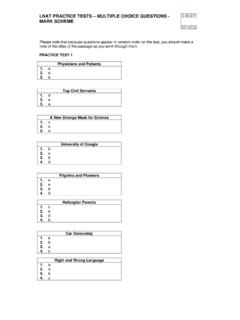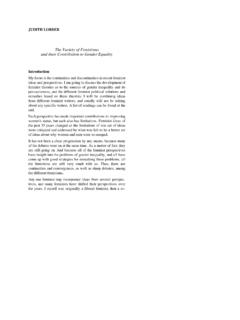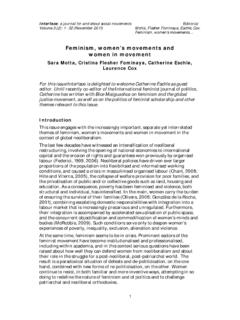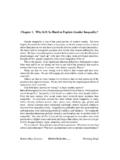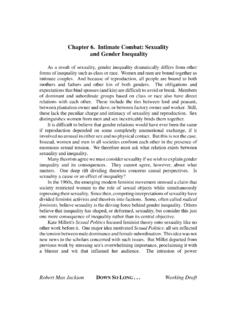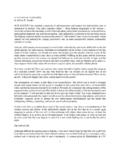Transcription of National Admissions Test for Law (LNAT)
1 LNAT: The National Admissions Test for Law Sample Test 1 2010 LNAT Consortium Ltd National Admissions Test for Law (LNAT) Sample Test 1 (2010) The test has 2 separate sections, A and B. Section A: Multiple Choice This section is divided into 12 sub sections; each sub section has between 3 and 4 questions. You should answer all 42 multiple choice questions in Section A, selecting one of the possible answers listed for each question. Time allowed: 95 minutes Section B: Essay This section has 5 essay questions. You should select and answer one question in Section B. Time allowed: 40 minutes Sample Test 1 11 Physicians and Patients Traditional medical oaths and codes prescribe a physician s character, motives, and duties.
2 Typically they portray ideal physicians as devoted to the welfare of patients and to advancement of the medical profession and medical knowledge, responding compassionately to the suffering of patients, humbly mindful of the limits of their curative powers and the harms they may unintentionally cause. The Hippocratic injunction Strive to help, but above all, do no harm is the ruling maxim. Although still supported by religious texts and medical tradition, this ideal physician is increasingly criticized as paternalistic , too willing to act on judgments of a patient s best interests without the patient s knowledge or consent. To treat without consulting a patient is to assume that a patient does or should share one s own assessment of the risks, benefits, and burdens of treatment.
3 But current hospital specialists, it is said, rarely know their patients (or themselves) well enough to make this assumption without serious risk of ignorant arrogance. Given hospital hierarchies, such paternalistic physicians are seen to resemble Victorian patriarchs. Some physicians reject such criticism as intervention by lawyers, philosophers, feminists, and other social critics ignorant of the realities of medical and hospital life. But the neo-paternalists admit that physicians should attend more carefully to a patient s desires and to give them greater weight in arriving at a treatment of choice. Unmollified critics, however, continue to insist that treatment choice belongs to the patient, however imprudent, and not to the physician, however attentive and knowing.
4 To curb Hippocratic paternalism they define a range of patients specific rights to be told about, and choose among, alternative treatments, including a right to refuse all, even life-saving treatment. These rights confer adult status on patients whom paternalists regard as children, replacing quasi-familial with quasi-legal relations. A patient s free and informed consent reflects an implicit therapeutic contract, defined and reviewed as treatment proceeds. A physician who treats without such consent is not a patriarch, but a batterer. Less litigiously, these rights define a principle of autonomy traced to Kantian notions of respect for persons and inherent human dignity.
5 Attempts to apply this principle have raised questions of scope: Is a patient s free and informed consent needed for routine procedures with slight or rare risks? Is consent required if a patient would, in the physician s judgment, be medically harmed by information about diagnosis and prognosis? Are refusals to be honoured even if patients risk death, as do surgical patients religiously opposed to blood transfusion? Does the principle (contra Kant) cover voluntary euthanasia? Can children or mentally ill patients give informed consent at least for some procedures? Can parents or other surrogates give or refuse substituted consent when a patient is too ill to consider the options or to speak.
6 Sample Test 1 2 Whatever the scope of a principle of patient autonomy, this challenge to paternalism has shifted the categories of concern. Physicians power, not their character, has become the issue. Consequently, Who is to decide? has become more pressing than What is to be done? Proper procedure has become as important, in medical ethics, as correct conclusions. Sample Test 1 31. Which of the following pairs is not used as an opposition in the passage? (a) ideal physician and Victorian patriarch (b) adult and children (c) quasi-familial and quasi-legal (d) patriarch and batterer (e) paternalism and autonomy 2. The writer takes the view that: (a) physicians need to change their attitudes (b) some doctors are too old-fashioned (c) we need to reconsider the validity of the Hippocratic oath (d) the most important issue in medical ethics today is who decides (e) the patient should decide on their treatment, not the physician 3.
7 Why might voluntary euthanasia be against Kantian principles? (a) It is not a medical treatment (b) It does not respect human dignity (c) It is contrary to natural law (d) It undermines the patient/physician relationship (e) It is not an example of autonomy Sample Test 1 4 2 Top Civil Servants The conservatism of top civil servants in advanced capitalist countries needs to be seen not in general terms but in specific ones, related to the class configurations and hierarchies of these particular societies, and to have as its major purpose not simply the defence of a social order but of the particular social order typical of these societies in all its major manifestations.
8 In other words, top civil servants in these countries are not simply conservative in general; they are conservative in the sense that they are, within their allotted sphere, the conscious or unconscious allies of existing economic and social elites. There is more than one reason for this. The most obvious one is that the social provenance, and the education and class situation of top civil servants makes them part of a specific milieu whose ideas, prejudices and outlook they are most likely to share, and which is bound to influence, in fact to define, their view of the National interest . But this is by no means all. There is also the fact which is often overlooked in this context that the ideological soundness of top civil servants (and of many others as well) is not a matter which, in these countries, is now left to chance.
9 Recruitment and promotion are no longer in the main determined on the basis of social provenance or religious affiliation. Nor are civil servants in these systems expected to subscribe to a specific political doctrine or ideology. But they are nevertheless expected to dwell within a spectrum of thought of which strong conservatism forms one extreme and weak reformism the other. Outside that spectrum, there lurks a grave danger, and in some countries the absolute necessity, of a blighted administrative career or of no administrative career at all. In all capitalist countries, though with different degrees of thoroughness (the United States easily leading the field), candidates to the civil service and members of it are subjected to screening procedures and security checks which have become a familiar and permanent feature of Western administrative life.
10 The official reason given for these procedures is that they are required to exclude security risks from employment by the state, particularly in important and sensitive posts. But the notion of what constitutes a security risk is an elastic one and can easily be stretched to encompass anyone whose opinions and ideas on important issues depart from a framework of soundness defined in terms of the prevailing conservative consensus. Moreover, the knowledge which civil servants have of what is expected, indeed required, of them in ideological and political terms is likely to be more than sufficient to ensure that those of them who might be tempted to stray from the narrow path they are expected to tread will subdue and suppress the temptation.
